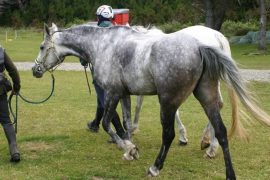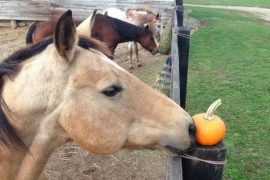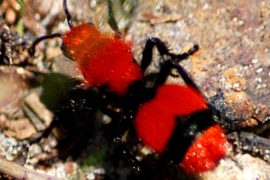The aquatic plant genus Vallisneria, also called Vallisnerie or water screw, has been one of the most popular and well-known aquarium plants for years. Various shapely representatives of this species can be found in our tanks. In this plant portrait, we will explain exactly what these are, how they differ, and what demands they have on the environment in the aquarium.
Differentiation of the individual species: Vallisneria in the aquarium
Which Vallisnerie do I have in front of me?
Even experts cannot always answer this question at first glance. The taxonomy of the aquatic plant genus Vallisneria has not yet been definitively studied, although great progress has been made in recent years. The Vallisneria belongs to a very variable genus. Since the plants inhabit different habitats and grow in different climatic regions, many forms have developed. In addition, the plants in cultivation have long trade routes behind them. Often it is even difficult to determine the country of origin.
The most reliable way to determine which species you belong to is by looking at the characteristics of the flowers. It must be noted that Vallisneria is dioecious: there are male and female plants. In aquarium culture, the flowers are formed relatively rarely. Therefore, the plants in the aquarium often cannot be clearly assigned to individual Vallisneria species. Currently, 17 Vallisneria species are distinguished. Plants kept in aquarium culture are believed to belong to one of the following species:
- Vallisneria Asiatica
- Vallisneria americana
- Vallisneria australis
- Vallisneria caulescens
- Vallisneria nana
- Vallisneria spiralis
We would like to introduce you to some of the most common commercially available species and varieties from the Vallisneria genus with their respective properties.
- Vallisneria Asiatica
- Vallisneria australis “gigantea”
- Vallisneria nana
- Vallisneria spiralis
- Vallisneria spiralis ‘Tiger’
- Vallisneria spiralis ‘Tortifolia’
- Vallisneria natans
- Vallisneria asiatica
We do not cultivate the normal form of Vallisneria Asiatica. The form that is very often found in aquariums and in specialist shops is the plant with spirally twisted, very decorative leaves. This is thought to be Vallisneria Asiatica var. biogenesis, a form of Vallisneria spiralis found in Lake Biwa, Japan. The leaves are light green, twisted, very narrow, and from three to ten centimeters wide. The leaves are clearly toothed down and they are five to 50 centimeters long. Vallisneria Asiatica grows better at slightly higher temperatures of 22 to 28 degrees Celsius. Since it naturally grows in shallow water in sunny places, this Vallisnaria responds positively to good lighting in aquarium culture as well. It requires more nutrients than Vallisneria spiralis.
Vallisneria gigantea
Many studies have led to the conclusion that the cultivated specimens of Vallisneria gigantea belong to the species Vallisneria australis. They are fast-growing plants that are easy to care for. The leaves of this Vallisneria are ten to thirty millimeters wide and can grow up to three meters long in nature. In the aquarium, they usually remain 50 to 150 centimeters long. In the case of the Vallisneria gigantea, too, the plants sold commercially under the name differ from one another.
Some plants are only serrated at the tip of the leaf, others have slightly narrower leaves that are serrated in the upper part of the leaf, but the teeth on the leaf margin are significantly coarser than in the other Vallisneria species. Due to their size and rapid growth, they need a nutritious substrate or a correspondingly large amount of fertilizer. Therefore one should cut or trim the older leaves from time to time because they have a tendency to flood to the water surface. This takes away the light from the other plants.
The Vallisneria gigantea grows better at slightly higher temperatures, optimally at 22 to 35 degrees Celsius. It does not make great demands on the light intensity and is satisfied with low to medium light intensity. Good light intensity should be ensured for forms with marked or reddish leaves. Otherwise, the color or marbling of the Vallisneria loses intensity and can even disappear completely. The leaves are very tough and therefore also suitable for aquariums with herbivorous fish.
Vallisneria nana
The dwarf Vallisneria Vallisneria nana comes from Australia. The name is a bit misleading as Vallisneria nana is not the smallest Vallisneria species. In any case, the leaves of this Vallisneria are very narrow, less than a centimeter wide, and dark green. The tip of the leaf is pointed, and there are fine teeth on the upper edge of the leaf that are almost invisible to the naked eye and that stand out particularly clearly at the tip of the leaf. Like all Vallisnerien it forms short offshoots.
In the beginning, in the growth phase, the narrow leaves are often very short and stiff, sickle-shaped in cross-section, and only up to 15 centimeters long. After some time, longer leaves often form, which can even reach up to 80 cm in length and are somewhat wider and thinner. The plants quickly form dense groups. It grows best at temperatures of 22 to 24 degrees Celsius and is suitable as a midground and background plant in small aquariums. Flowering in the aquarium is very rare.
Vallisneria spiralis
Vallisneria spiralis is the longest known water screw. It has been used as an aquarium plant for so long, mainly because it is native to Europe (but also Africa and probably Southwest Asia as well). The first specimens described came from Italy. The widespread distribution of Vallisneria spiralis has led to the formation of different populations. The differences can relate to the leaf shape – i.e. width, length, and leaf edge (serrated or smooth). The leaves are mostly light to dark green, up to 80 centimeters long and five to 15 mm wide. Demands on the conditions in the aquarium can also vary depending on the origin. So there are plants that need more or less heat.
Vallisneria spiralis quickly forms dense stocks in the aquarium. The plant is very adaptable. It grows best at temperatures between 20 and 28 degrees Celsius. They grow more slowly at temperatures below 20 degrees, and temperatures above 30 C are also not optimal. In nature, plants of the species Vallisneria spiralis can be found in nutrient-rich, stagnant, or slowly flowing water. They also grow better in the aquarium with a good supply of nutrients. It is interesting that the commercially available plants called Vallisneria spiralis often have very different leaf shapes. There are forms with broad and narrow leaves, and some are clearly toothed along the entire length of the leaf. On the market, there are also plants with a very smooth leaf edge, almost without perforation, under the name Vallisneria spiralis.
Vallisneria spiralis ‘Tiger’
This species is a color form of Vallisneria spiralis. With strong lighting, many small brown cross-streaks become visible in the leaf blade. This marbling is very dependent on the lighting intensity and can also disappear completely. Vallisneria spiralis ‘Tiger’ is 30 to 50 centimeters long and has leaves that are five to fifteen millimeters wide. It grows a little more slowly and has less of an urge to spread than other Vallisneria.
Vallisneria spiralis ‘Tortifolia’
Vallisneria spiralis ‘Tortifolia’ is a form of Vallisneria spiralis that has very short and conspicuously twisted leaves. As with all Vallisneria, the appearance of the leaves is highly dependent on the growing conditions. The leaf color can be light green, but also olive green, the leaf width can reach a length of three to ten millimeters. The plants on the market are finely toothed only in the upper part of the leaves. They have a clearly visible median nerve.
It is arguably the Vallisneria that remains the lowest. Their leaves are usually only 25 centimeters long. It is therefore suitable for the foreground and the middle ground of the aquarium. Vallisneria spiralis ‘Tortifolia’ is a bit more demanding and needs more warmth and more light than Vallisneria spiralis. Under good cultivation conditions, it has more twisted leaves. The plants form slightly longer stolons than the parent form, therefore the new plants appear a little further away from the mother plant and they form loose clusters.
Vallisneria natans
According to some authors, the Vallisneria natans plants in cultivation may belong to the Vallisneria australis species. Although the leaf shape of V. natans is indeed similar to a small V. australis, I do not share this view. It finally gets confusing as some wholesalers offer the plants under Vallisneria Americana ‘natans’. As long as no conclusive studies are available here, I assume that the good species Vallisneria natans is actually on the market.
V. natans has mid-green, narrow leaves that are serrated on the upper half. The leaves reach a length of 50 to 100 centimeters and allow other, smaller aquarium plants enough light. The plants are very undemanding and their cultivation conditions correspond to those of Vallisneria spiralis. They differ from the latter by a rounded leaf tip. However, some wholesalers offer all smooth-leaved Vallisneria as V. spiralis. Depending on availability, the customer then gets V. natans one week and V. spiralis the next week with the label “Vallisneria spiralis” in the retail trade.
It shouldn’t matter to most aquarists, especially since both species have the same requirements and hardly differ in growth habits. I personally find it annoying, but I’ve given up on having an unbearable argument with the suppliers every time. If you really want to have the real Vallisneria spiralis, I recommend the Vallisneria spiralis “Tiger” from Tropica. On the other hand, if you are interested in the real Vallisneria natans, I can recommend the bunch of plants from Tropica (here referred to as Vallisneria Americana ‘natans’).
Which Vallisnaria is the best aquatic plant for my aquarium?
As an aquarist, you often ask yourself which of the Vallisneria on the market is the right one for your own tank. In order to answer this, you should first ask yourself the following questions:
How much space do I have?
For a small tank, Vallisneria spiralis ‘Tortifolia’ or Vallisneria nana would be the right choice. If I need a particularly uncomplicated, undemanding plant, then the Vallisneria spiralis is suitable, although another Vallisneria is easy to cultivate. If you are looking for a plant with an interesting leaf shape, you can access Vallisneria Asiatica or Vallisneria spiralis ‘Tortifolia’, which have very decorative, twisted leaves. As a plant with colored leaves, Vallisneria spiralis ‘Tiger’ is the right choice because it displays beautiful leaf patterns with good lighting.
If you have a very large tank, strong growing plants are an advantage, including Vallisneria gigantea.
In a medium-sized tank, Vallisneria natans or Vallisneria spiralis plants are in the right place, although in larger tanks you can use the smaller Vallisneria in the foreground and middle ground.
Are the environmental parameters correct?
If the nutrient and light supply meet the requirements of the chosen Vallisnerie, nothing stands in the way of the purchase. Now it only depends on your personal taste which type you choose. If you have any further questions, you can get professional help from a specialist dealer.
Do you have any questions about the aquatic plant genus Vallisnerie (water screw) or other suggestions on the subject? We welcome comments!





